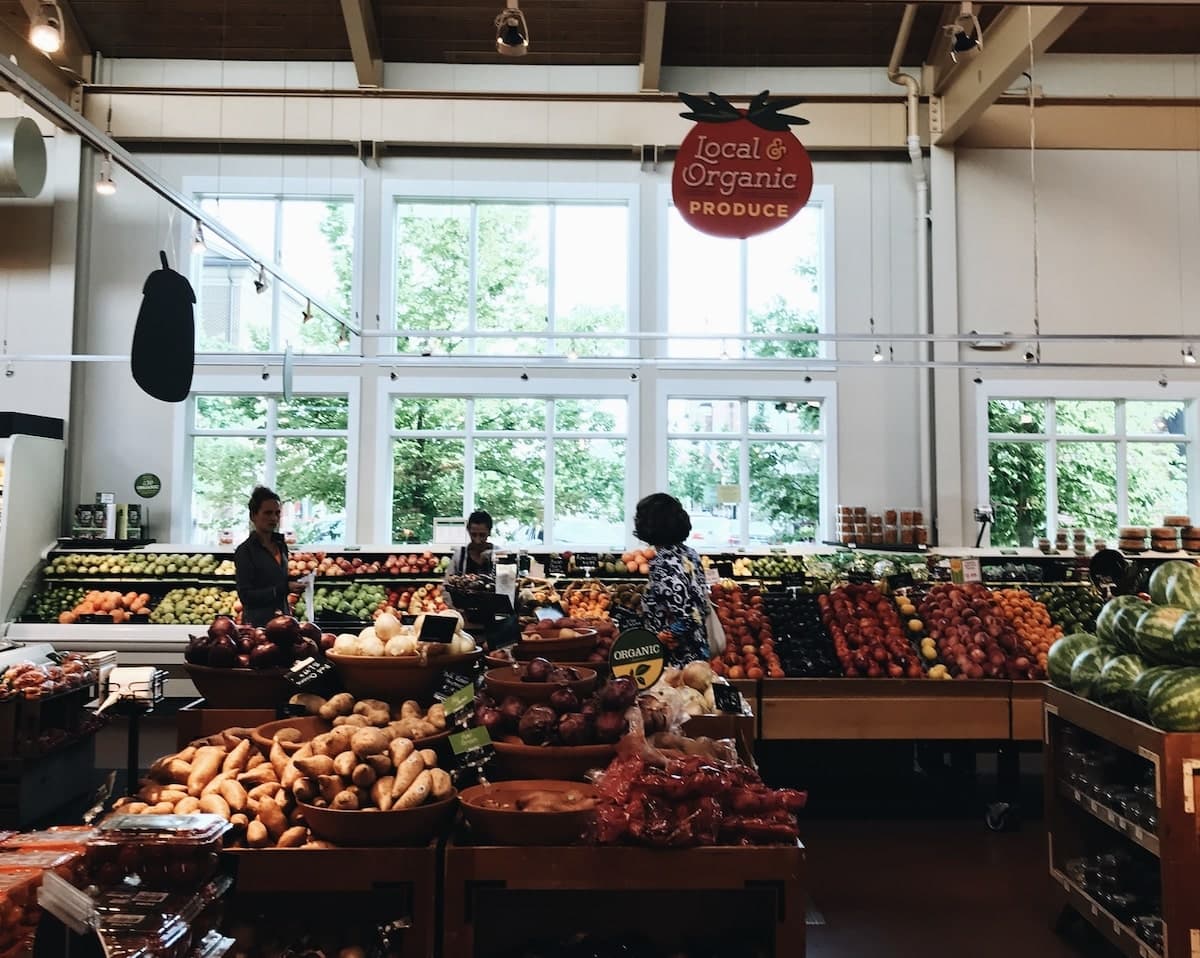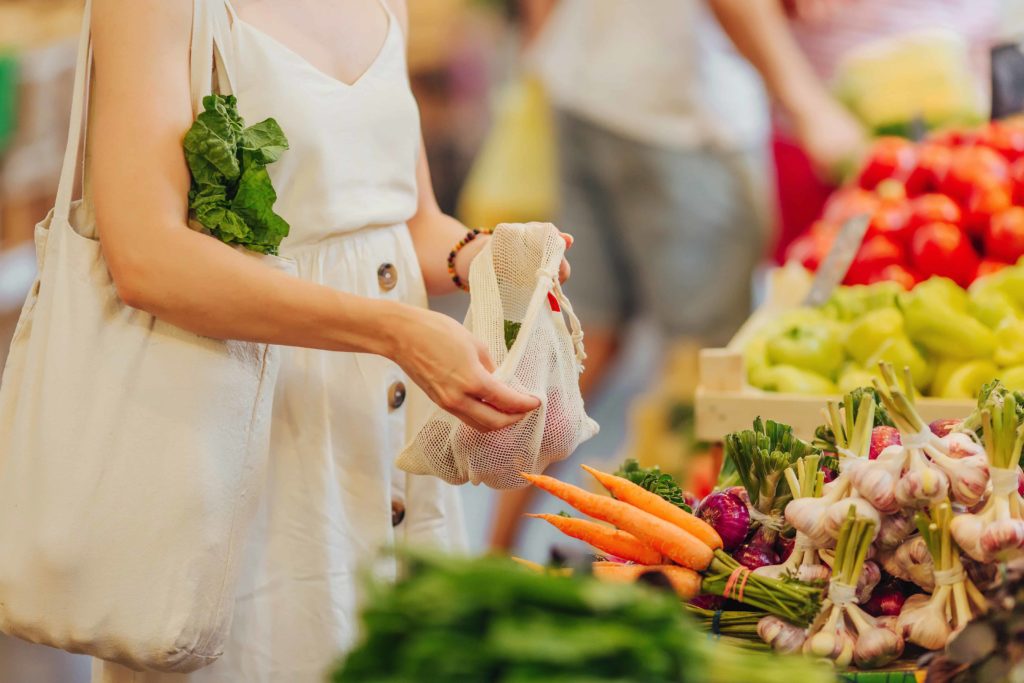Shop Smart, Live Green: Your Guide to Sustainable Grocery Shopping
Grocery shopping. A weekly ritual, a source of sustenance, and surprisingly, a significant contributor to our environmental footprint. But what if we could transform this everyday task into an act of environmental stewardship? This isn’t about deprivation; it’s about mindful consumption, choosing quality over quantity, and making informed decisions that benefit both your wallet and the planet.
Beyond the Bag: Rethinking Your Grocery Habits
Sustainable grocery shopping isn’t a checklist; it’s a mindset shift. It’s about understanding the lifecycle of your food, from farm to table, and making conscious choices at each stage. This starts before you even step foot in the store.
1. Plan Your Attack (and Your Meals):
Impulsive grocery shopping is the enemy of sustainability. Before you even think about the store, plan your meals for the week. This prevents food waste – a major contributor to greenhouse gas emissions. Create a detailed shopping list based on your meal plan, focusing only on what you need.
2. Choose Your Weapon (Wisely):
Forget single-use plastic bags. Invest in reusable bags, both large and small, for your produce and other items. Consider a reusable shopping cart for larger hauls. These small changes significantly reduce plastic waste.
3. The Sustainable Shopping List: Prioritize the Planet (and Your Plate)
Now for the fun part: selecting your groceries. Prioritize these elements for a truly sustainable shopping experience:
- Seasonal Produce: Locally grown, in-season fruits and vegetables require less transportation, reducing carbon emissions. Embrace the bounty of each season!
- Organic When Possible: Organic farming practices are better for the environment, reducing pesticide use and promoting soil health. However, prioritize seasonal and local even if it means foregoing organic in some cases.
- Buy Less Meat: Animal agriculture has a significant environmental impact. Reduce your meat consumption, opting for plant-based proteins more often. Consider buying meat from local, sustainable farms.
- Reduce Processed Foods: Highly processed foods often involve extensive packaging and resource-intensive production. Opt for whole, unprocessed foods whenever possible.
- Support Local Farmers: Farmer’s markets and community-supported agriculture (CSA) programs offer fresh, locally sourced produce and reduce transportation emissions. This also directly supports your community.
- Bulk Up!: Buying in bulk reduces packaging waste. Bring your own containers to refill items like grains, nuts, and dried fruits.
4. Packaging Prowess: Decoding the Labels
Packaging is a huge contributor to grocery waste. Be a savvy shopper and look for:
- Minimal Packaging: Choose products with minimal packaging or packaging made from recycled materials.
- Recyclable and Compostable Materials: Opt for products using recyclable or compostable packaging. Check your local recycling guidelines for specifics.
- Avoid Overpackaged Items: Say no to excessive plastic wrapping.
Table: Sustainable Shopping Choices
| Category | Sustainable Choice | Unsustainable Choice |
|---|---|---|
| Produce | Seasonal, locally grown, organic | Out-of-season, imported, conventionally grown |
| Protein | Plant-based, locally sourced meat | Factory-farmed meat |
| Grains & Legumes | Bulk buying, minimally packaged | Individually packaged, highly processed |
| Dairy | Locally sourced, minimally packaged | Mass-produced, heavily packaged |
| Beverages | Tap water, reusable bottles | Single-use plastic bottles |
5. The Art of the Leftover:
Food waste is a massive problem. Embrace leftovers creatively! Plan meals that utilize leftover ingredients, or freeze them for future use.
6. App-reciate the Sustainable Options:
Several apps can help you find local farmers’ markets, sustainable grocery stores, and even track your carbon footprint.
Beyond the Shopping Cart: A Holistic Approach
Sustainable grocery shopping is only one piece of the puzzle. Reducing food waste at home, composting food scraps, and supporting policies that promote sustainable agriculture are all crucial steps in building a more environmentally friendly food system. By making conscious choices, one grocery trip at a time, we can all contribute to a healthier planet.

Additional Information
Making sustainable choices at the grocery store goes beyond simply buying organic. It requires a holistic approach considering the entire lifecycle of the product, from its origin to its disposal. Here’s a detailed breakdown of how to make more sustainable grocery shopping choices:
I. Planning and Preparation:
- Meal Planning: Plan your meals for the week before you shop. This prevents impulse buys and reduces food waste, a major contributor to unsustainability. Knowing what you need minimizes the likelihood of purchasing excess items that will eventually spoil.
- Inventory Check: Check your pantry and fridge before heading to the store. This avoids redundant purchases and reduces food waste. Use apps or a simple notebook to track your inventory.
- Shopping List: Stick to your list. This focused approach prevents impulsive purchases of items you don’t need, saving money and reducing environmental impact. Categorize your list by grocery store section to streamline your shopping trip.
- Choose a Sustainable Store: Consider shopping at local farmers’ markets, co-ops, or smaller grocery stores that prioritize local sourcing and sustainable practices. Larger chains are increasingly offering sustainable options, but their overall impact can be greater.
II. Choosing Sustainable Products:
- Local and Seasonal Produce: Opt for fruits and vegetables grown locally and in season. This reduces transportation emissions and supports local farmers. Look for labels indicating origin or ask your grocer.
- Reduced Packaging: Choose products with minimal packaging or packaging made from recycled and recyclable materials. Avoid excessive plastic packaging whenever possible. Bring your own reusable bags and containers.
- Organic Produce and Products: Organically grown food reduces the use of pesticides and harmful chemicals, benefiting both the environment and your health. However, consider the transportation distance. Locally grown conventional produce might be more sustainable than organically grown produce from far away.
- Fair Trade Certified Products: Support farmers and workers in developing countries who receive fair wages and work in safe conditions. Look for the Fair Trade certification label.
- Sustainable Seafood: Choose seafood that is sustainably sourced and certified by organizations like the Marine Stewardship Council (MSC). Overfishing is a serious environmental problem, so choosing responsibly sourced seafood is crucial.
- Reduce Meat Consumption: Animal agriculture has a significant environmental impact. Reducing meat consumption, particularly red meat, can significantly lower your carbon footprint. Consider plant-based alternatives or reducing your meat intake to a few times a week.
- Avoid Processed Foods: Processed foods often require more energy and resources to produce and generate more waste. Choose whole, unprocessed foods whenever possible.
- Buy in Bulk: Buying in bulk can reduce packaging waste per unit, but only if you can actually consume the larger quantity before it spoils. This strategy is best for non-perishable items you frequently use.
- Look for Sustainable Certifications: Various certifications (e.g., USDA Organic, Rainforest Alliance, B Corp) indicate that products meet certain environmental and social standards. Familiarize yourself with these certifications to make informed choices.
III. Reducing Waste:
- Reusable Bags and Containers: Bring your own reusable bags, produce bags, and containers to reduce plastic waste.
- Proper Food Storage: Store food correctly to extend its shelf life and reduce waste. Learn about proper refrigeration and freezing techniques.
- Composting: Compost food scraps and yard waste to reduce landfill waste and create nutrient-rich soil.
- Don’t Overbuy: Only buy what you need and can reasonably consume before it spoils. Be realistic about your consumption habits.
- Utilize Leftovers: Get creative with leftovers to minimize food waste. Plan meals that incorporate leftover ingredients.
IV. Beyond the Grocery Store:
- Support Local Farms: Consider visiting a Community Supported Agriculture (CSA) program to receive a regular share of locally grown produce.
- Reduce Food Waste at Home: Implement strategies to prevent food waste at home, like proper storage and meal planning.
- Advocate for Change: Support policies and initiatives that promote sustainable agriculture and reduce food waste.
By implementing these strategies, you can significantly reduce your environmental impact while making healthier and more ethical food choices. Remember that sustainability is a journey, not a destination. Start with small changes and gradually incorporate more sustainable practices into your grocery shopping routine.

